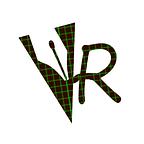Creating VR content is easy.
VRTK and Unity make it simple to build content for VR.
After 15 minutes with the Virtual Reality Toolkit for Unity I’ve placed objects, climbed around a level I customized, and used dual pistols. These are plug and play interactions, all accessible and editable to even novice Unity users. Nothing is out of reach when you use VRTK. You can open any file and tweak any code. Most of the work has been done for you. All of the sample scenes can be duplicated and turned into experiences.
VRTK makes much of VR interactions practical. To play around with its sample scenes is a great way to familiarize yourself with the potential of VR. It stands a good chance at being THE tool for game devs to dip their toes into VR.
It is an exciting time for VR development, the ability to get in and play around is easy, and no rules have been set.
With other free assets available in the Unity asset store the ability to create compelling VR experiences in no time is so easy a child can do it. The ease of creating content with Unity and VRTK reminds me of the days of the Starcraft: Brood War custom map editor. Creating custom maps like RPGs, and tower defenses, and the hero games that would one day mould into WarCraft 3’s MOBA maps and then into standalone games like DotA2.
With VRTK you don’t need a VR headset to create for VR.
You can simulate a headset via a first person camera, and you can simulate the hand controllers via the mouse and keyboard. All the sudden the biggest barrier to entry is gone. Now developers tight in the wallet can create VR experiences for FREE using Unity, its asset store, and tools like VRTK. The number of VR experiences will continue to explode with easy to use tools like these.
Simple VR games are tossed together on a whim and sold for $30 today, because of an illusion that VR is hard to do. In reality, the best VR experiences have yet to be made as these are early days for the industry. It will take thousands of indie developers experimenting before the most sought after VR experiences can be discovered, and tools like VRTK make experimenting easier than ever.
What if we took all these little VR experiences, combined their core mechanics into a single game, and gave that game away for free?
Against Gravity has had much success using this tactic with their social game Rec Room. The VRTK example scenes contain most of the features of games like Rec Room. There aren’t many game mechanics built into the examples yet, just interactive environments that could be scripted to follow a story if a designer so chose to do so.
A storyteller without much development experience can hop in, tool around, re skin the world with free assets, add in models and characters, and even use visual scripting tools to avoid writing code and voila! Out pops a VR game built in the free time of an enthusiast.
Now is the time to get in and get your hands dirty with VR dev.
Now is NOT the time to make money. But, those who dive in and learn the systems today will be the first creators able to create experiences worth the time and money of the VR players in the future. The VR players who will be diving in for their first time using headsets far better than the ones we have today.
Even if you don’t have a VR headset with you, hop in VRTK, Use free tools like Unity and create some stuff! make little games you think would be fun. Once they are polished enough ask the internet of users who have a headset to test it for you. Get feedback and iterate. Keep this up and a few years from now you may be one of the first devs to create VR games of the future, or at least a nice little chunk of the metaverse.
Building something for VR? Share your project with us!
